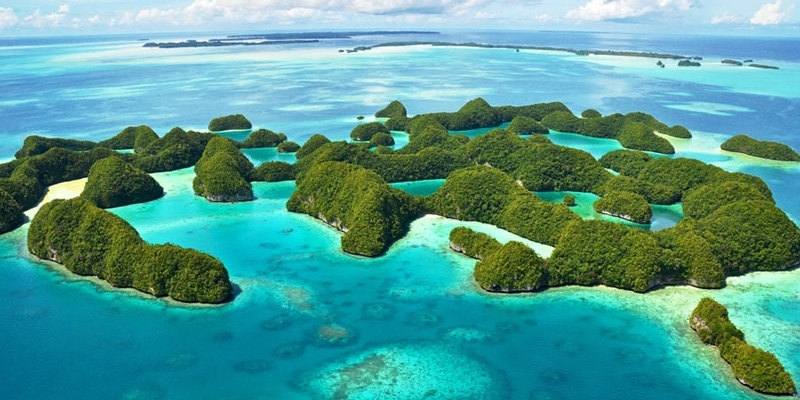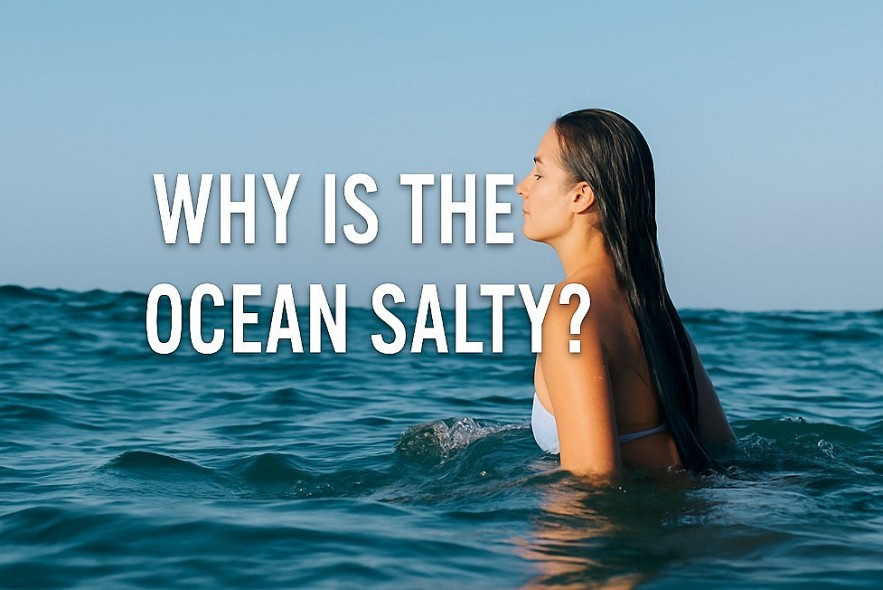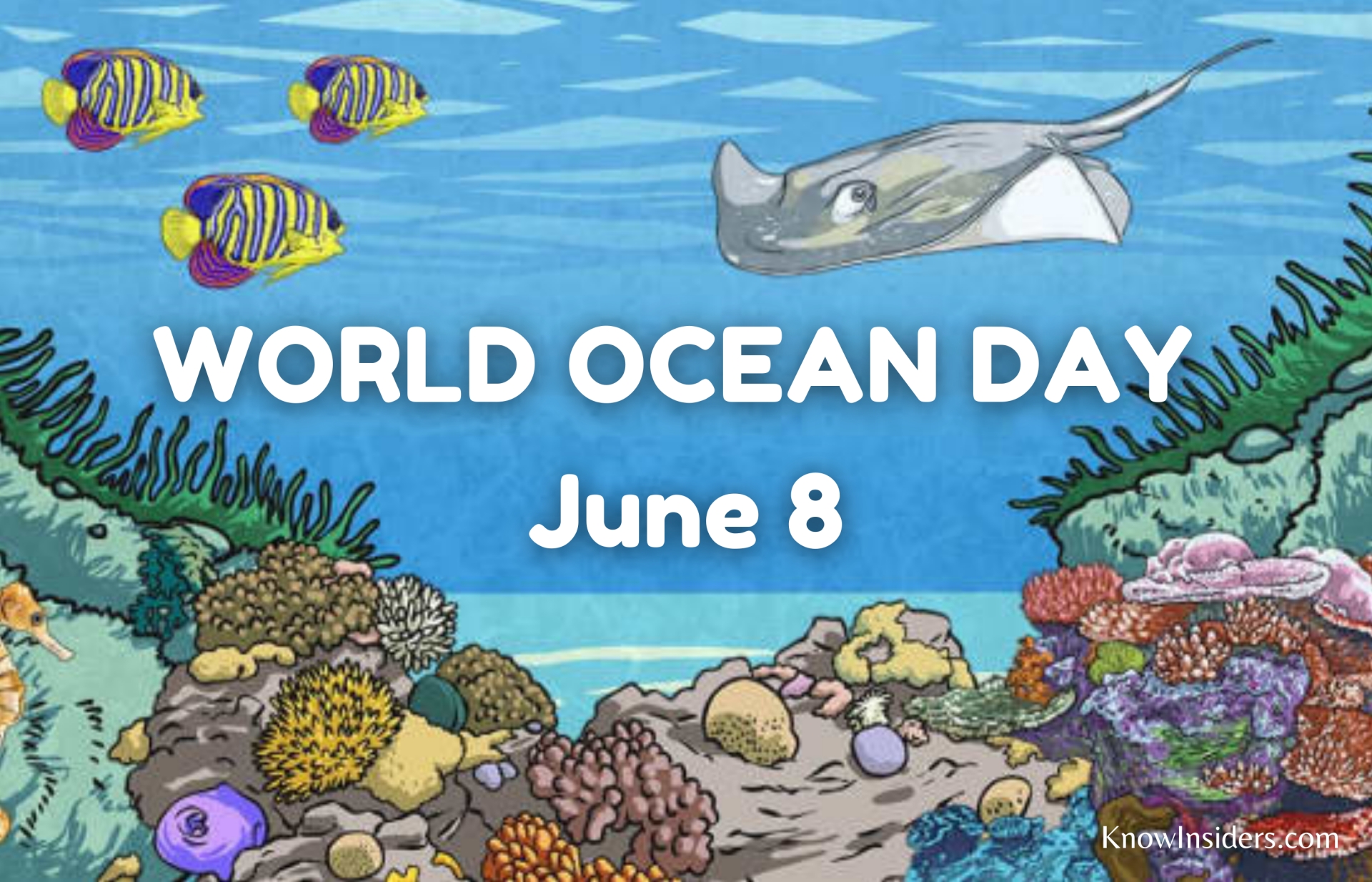Why is the Ocean Salty But Lakes and Rivers Are Not?
 How Many Seas Are There on Earth Today: Full List, Top Largest and Smallest Seas How Many Seas Are There on Earth Today: Full List, Top Largest and Smallest Seas |
 How Many Countries Are There In Oceania: Facts, Figures and Population How Many Countries Are There In Oceania: Facts, Figures and Population |
We swim in it, sail across it, and study it. The ocean is a fundamental part of life on Earth—and one of its defining features is its salinity. But have you ever wondered: Why is the ocean salty? Why aren’t rivers or lakes nearly as salty? In this article, we explore the deep origins, ongoing processes, and global significance of salt in the seas—and how it shapes our world in invisible but powerful ways.
 |
| What Makes the Ocean Salty |
What Makes the Ocean Salty?
Ocean water contains a mixture of dissolved minerals, with sodium chloride (common table salt) being the most abundant. On average, seawater contains about 3.5% salt by weight, meaning that in every liter of seawater, there are around 35 grams of salts dissolved.
This salinity gives seawater its unique taste, higher density, and electrical conductivity. But it’s not static—salinity plays a dynamic role in Earth’s climate, ocean currents, and biological systems.
Where Does the Salt Come From?
The salt in the ocean doesn’t come from a single source. It’s the result of billions of years of geological and chemical processes. The two main contributors are:
1. Rock Weathering on Land
Rainfall, slightly acidic due to carbon dioxide in the atmosphere, erodes rocks on the continents. This process breaks down minerals, which release ions such as sodium (Na⁺), chloride (Cl⁻), calcium (Ca²⁺), magnesium (Mg²⁺), potassium (K⁺), and others. These ions are carried by rivers into the oceans.
2. Hydrothermal Vents and Volcanic Activity
On the seafloor, hydrothermal vents and underwater volcanoes release a cocktail of dissolved minerals directly into the ocean. When seawater seeps into the ocean crust, it reacts with hot rocks and emerges carrying new ions into the seawater. These underwater systems are especially rich in magnesium, iron, and sulfur compounds.
Over time, salts accumulate because the ocean has no natural outlet like rivers or streams to flush them away. While water can evaporate from the ocean’s surface, leaving the salts behind, the only significant salt removal comes from processes like mineral deposition and sea spray, which occur much more slowly.
Why Aren’t Rivers Salty?
If rivers carry salt into the ocean, why aren't rivers themselves salty? The answer lies in concentration and turnover. River water is constantly replenished by rainfall, and it flows quickly through channels before reaching the sea. This constant movement prevents significant salt buildup. Oceans, by contrast, have had millions of years to accumulate minerals.
 World Oceans Day: Great Quotes, History, Significanc and Theme World Oceans Day: Great Quotes, History, Significanc and Theme |
How Did the Ocean Become Salty Over Time?
The salinity of oceans has been rising steadily since Earth’s early history. During the Precambrian era, early oceans were likely much less salty. As tectonic activity and erosion increased, so did the influx of dissolved minerals. The oceans eventually reached a kind of equilibrium—where salt was being added and removed at relatively stable rates.
Today’s average ocean salinity of 3.5% is the result of this ongoing balance, but local variations still occur based on climate, location, and freshwater input.
Variations in Ocean Salinity
Ocean salinity isn’t uniform. It varies depending on:
-
Location: Areas with high evaporation (like the Red Sea) tend to be saltier.
-
Precipitation and River Input: Regions with high rainfall or river flow (like near the Amazon River) are less salty.
-
Ice Melt and Formation: Melting ice dilutes seawater, while forming sea ice increases salinity in surrounding waters.
Saltiest Waters on Earth
-
Dead Sea (not technically an ocean): ~34% salinity.
-
Red Sea: ~4.1% salinity.
-
Mediterranean Sea: ~3.8% salinity.
The Role of Salt in Ocean Life and Climate
Ocean salinity isn’t just trivia—it’s vital for the planet’s climate and ecosystems.
1. Ocean Circulation
Salt affects the density of seawater. Along with temperature, it drives the thermohaline circulation (also called the global conveyor belt), which moves vast amounts of heat and nutrients around the planet. Changes in salinity can disrupt these currents and impact climate stability.
2. Marine Life
All marine organisms are adapted to specific salinity levels. Coral reefs, fish, and plankton rely on a delicate balance. Changes in salinity—due to climate change or human activity—can disrupt marine ecosystems.
3. Desalination and Human Use
While salty water isn’t drinkable, saltwater can be processed through desalination—an increasingly important technology in water-scarce regions. However, desalination is energy-intensive and creates brine waste, raising environmental concerns.
What If the Ocean Became More or Less Salty?
A significant shift in ocean salinity could have global consequences:
-
More Salty: Higher density seawater would sink more rapidly, altering global currents. It could also make marine environments uninhabitable for some species.
-
Less Salty: Could weaken thermohaline circulation, disrupt rainfall patterns, and impact global temperatures.
Even small changes in average salinity can tip ecological balances, affect sea ice formation, and change carbon dioxide absorption rates—with cascading effects on weather systems and biodiversity.
Fascinating Facts About Ocean Salinity
-
If you extracted all the salt from the ocean and spread it evenly across the Earth’s land surface, it would form a layer over 500 feet (150 meters) thick.
-
The ocean holds about 50 quadrillion tons of dissolved salts.
-
Most of the ocean’s salt is the same type found in your kitchen shaker—sodium chloride.
-
There’s more salt in one cubic mile of seawater than in all the salt mines on Earth combined.
Frequently Asked Questions (FAQs)
Why is the ocean salty but lakes and rivers are not?
Lakes and rivers are constantly flushed with fresh rainwater and flow toward the sea. They don’t have enough time or enclosed volume to accumulate large amounts of salt.
Can the ocean become less salty over time?
It’s possible but unlikely under natural conditions. However, melting glaciers and increased rainfall due to climate change may temporarily lower salinity in some regions.
Do all oceans have the same salt concentration?
No. Salinity varies due to temperature, evaporation, rainfall, and ocean circulation. The Atlantic Ocean, for instance, is saltier than the Pacific.
Is ocean salt the same as table salt?
Yes and no. The majority of ocean salt is sodium chloride, like table salt, but it also contains other dissolved minerals like magnesium, calcium, and sulfate.
Can we remove salt from the ocean to use as fresh water?
Yes, through desalination. But it’s expensive and energy-intensive, making it a challenge for widespread use.
Conclusion
The ocean’s saltiness is a result of ancient geology, ongoing chemistry, and planetary physics. It’s more than just a flavor of the sea—it’s a dynamic, powerful indicator of Earth’s climate system, biological health, and geological history. Next time you taste the salt in the ocean, remember: you're experiencing the result of a billion-year-old planetary process still shaping our world today.
 Why the Sky is Blue - Scientific & Ancient Explaination Why the Sky is Blue - Scientific & Ancient Explaination One of the first questions a child often asks is "why is the sky blue?" Yet despite how popular this question is, there are many ... |
 Why Is There A Leap Year? Why Is There A Leap Year? A Leap Day, February 29, also called Leap Year Day, makes the year 366 days long. Why is there a leap year with a leap ... |
 Why Is Fire Retardant Red? The Mystery of the 'Red Smoke' Used to Put Out Fires in Los Angeles Why Is Fire Retardant Red? The Mystery of the 'Red Smoke' Used to Put Out Fires in Los Angeles In this article, we’ll explore the science, composition, and significance of the red fire retardant, unveiling the mystery behind its striking hue. |
 Why Do Cats Purr? The Surprising Meanings Behind a Purring Cat Why Do Cats Purr? The Surprising Meanings Behind a Purring Cat Cats don’t just purr when they’re happy. Discover the deeper reasons behind a cat’s hum—healing, stress relief, and clever communication. |
 Why Do We Yawn? The Medical and Psychological Truth Why Do We Yawn? The Medical and Psychological Truth Yawning isn’t just about sleepiness. It’s a biological puzzle—part brain coolant, part body alarm system, part social glue. What’s your yawn trying to tell you? |























